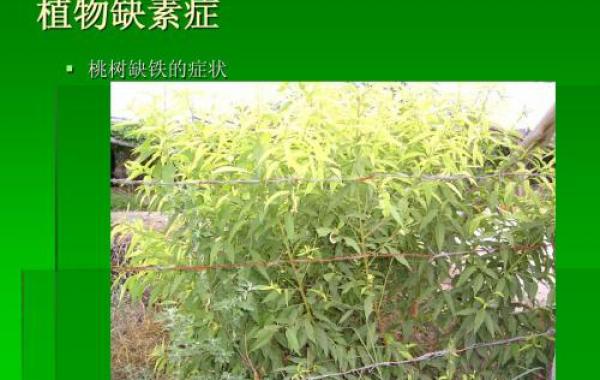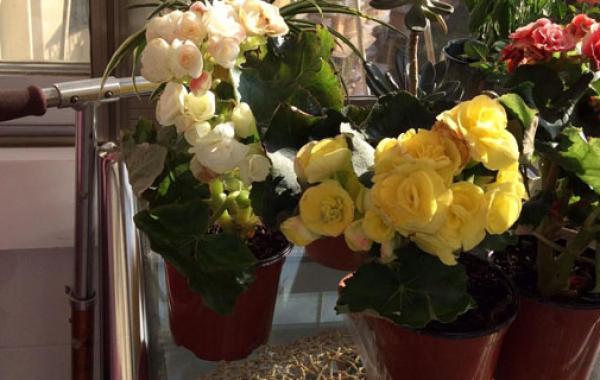What are the manifestations of element deficiency in flowers?

What are the manifestations of element deficiency in flowers.
If the fertilizer application of flowers is unreasonable, it will lead to the occurrence of element deficiency, then there will be different performance after the lack of different elements.
The symptom of manganese deficiency was similar to that of iron deficiency. Chlorosis spots appeared between leaf veins and stripes were gradually formed, but leaf veins were still green.
The young leaves of boron deficiency lost chlorosis, the leaves were thickened and wrinkled, the leaf margin curled upward, the root system was underdeveloped, the terminal bud and young root growth point died, flowers and fruits fell.
The terminal bud of calcium deficiency was damaged, and caused root tip necrosis, green leaf loss, leaf edge curling up and scorched, leaf tip often hooked.
The sulfur-deficient leaves become light green, even white, expand to new leaves, the leaves are small, the plants are short, the flowering is delayed, and the roots are obviously elongated.
The internodes of zinc deficient plants were obviously atrophied and ossified, the leaves became yellow or smaller, macula appeared between leaf veins, spread to new leaves, and young leaves were hard and small, and yellowing.
The young leaves of molybdenum deficiency were yellowish green, and the leaves lost green and withered, resulting in necrosis.
The tips of copper-deficient leaves were white, the young leaves shrunk, and white leaf spots appeared.
The causes of nutrient deficiency are various, such as deficiency or imbalance of nutrition, excessive acidity and alkali of soil, invalidation of some nutrient elements in soil, poor physical and chemical properties of soil, and so on, resulting in a variety of deficiency. Prevention and treatment methods, to prescribe the right medicine, respectively take the following measures: ① extra-root topdressing, according to the symptoms, infer what kind of element is missing, that is, choose this element to prepare a certain concentration of solution for foliar spraying. ② increased the application of rotten organic fertilizer to improve the physical and chemical properties of soil. ③ uses all-element compound fertilizer. ④ implements winter ploughing and soil drying to promote soil weathering and give full play to soil potential fertility.
Nitrogen deficiency: the plant is light green, the old leaves at the base turn yellow and brown when dry. The stem is short and thin, with few branches or tillers, and premature senescence occurs. If the fruit tree is deficient in nitrogen, it is characterized by small fruit, few fruit, hard pericarp and so on. Phosphorus deficiency: the plant is dark green, often red or purple, dark green when dry. The stem is short and thin, the basal leaves turn yellow, the flowering is delayed, and the seeds are small and not full.
Potassium deficiency: the stem is easy to lodge, the leaf edge is yellowed, scorched, fragmented, necrotic spots appear between the veins, the whole leaf sometimes shows cup curl or wrinkle, brown root is more. Grain crops and other crops with high sugar content need more potassium in the later growth stage, such as cereals and potatoes, sweet potatoes, watermelons, grapes and so on.
Magnesium deficiency: leaves turn yellow, sometimes variegated (the difference from nitrogen deficiency), veins are still green, while veins turn yellow, sometimes purple, with necrotic spots.
Iron deficiency: chlorosis between veins, showing a clear reticulation, in severe cases, the whole leaf, especially the young leaf, is yellowish, even whitish. Such as camphor, gardenia and so on are easy to show this symptom.
Boron deficiency: first of all, it appears at the top, such as stopping growth at the top. The young leaves are deformed and wrinkled. The veins between the leaves turned green irregularly. The flower but not fruit of rape, the bud of cotton, the shrinking disease of apple and the heart rot of radish all belong to the cause of boron deficiency.
Zinc deficiency: small clusters of leaves, spots on both sides of leaves, dwarf of plants, shortening of internodes and postponement of growth period. If the leaflet disease of the tree, the white seedling of corn and so on. Copper deficiency: chlorosis of new leaves, white curl of leaf tips and paper twist, necrotic spots on leaves, and then withered.
Related
- What if the leaves of potted flowers turn yellow?
- Florescence Control of several Flowers
- Anti-freezing technology and post-freezing nursing technology of flowers
- What is the classification of flowers? What are the common methods of flower classification?
- Prevention and control of alkali and acid damage of flowers in courtyard
- Technology of Anti-freezing and restoring growth of Flower seedlings in greenhouse and greenhouse
- How does flower fertilization not hurt the root? Fertilization technology of flowers
- Key points of disinfection in flower greenhouse
- Several pesticides that are banned or used cautiously in flowers
- How to fertilize the flowers that watch the leaves?



